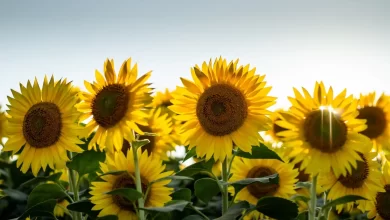Earth Day is an annual event celebrated in April that aims to raise awareness and support for environmental protection and sustainability. First observed in 1970, Earth Day has since grown into a global movement, with millions of people around the world coming together to demonstrate their commitment to protecting our planet. The day serves as a reminder of the urgent need to address pressing environmental issues such as climate change, pollution, and habitat destruction and to take action to safeguard the health and well-being of the natural world. Earth Day celebrations often include tree planting, beach cleanups, and other community events that promote environmental awareness and education. By coming together on Earth Day and throughout the year, we can work towards a more sustainable future and a healthier planet for all living beings.
- Earth Day was first celebrated on April 22nd, 1970, making it one of the oldest and most widely recognized environmental events in the world.
- The first Earth Day helped to launch the modern environmental movement, paving the way for a range of important environmental protections and regulations.
- The idea for Earth Day was conceived by Senator Gaylord Nelson of Wisconsin, who hoped to raise awareness about environmental issues and mobilize public support for environmental protection.
- In 1990, Earth Day went global, with more than 140 countries participating in events and activities around the world.
- The first Earth Day was celebrated by an estimated 20 million Americans, making it one of the largest demonstrations in U.S. history.
- Earth Day has since grown into a global event, with over 190 countries now participating in Earth Day activities and events.
- Earth Day celebrations often include tree planting, beach cleanups, and other community events that promote environmental awareness and education.
- In 2016, the United Nations held a special ceremony on Earth Day to formally sign the Paris Agreement, a historic global climate agreement aimed at reducing greenhouse gas emissions and limiting global warming.
- Each year, the Earth Day Network chooses a theme for Earth Day, with past themes including climate action, plastic pollution, and environmental literacy.
- Earth Day is now widely recognized as a time to reflect on our impact on the planet and to take action to protect the natural world for future generations.
- Earth Day serves as a reminder that we all have a role to play in protecting the planet and that by working together, we can create a more sustainable and equitable future for all.
- The Earth Day flag features a picture of the Earth taken from space, with a dark blue background symbolizing the vastness of space and light blue and white areas representing the planet’s oceans and land.
- Earth Day events and activities often focus on key environmental issues such as climate change, air and water pollution, deforestation, and wildlife conservation.
- Many celebrities and public figures have gotten involved in Earth Day over the years, using their platforms to raise awareness about environmental issues and promote sustainable living.
- Earth Day has inspired a range of environmental initiatives and campaigns, including the Clean Air Act, the Clean Water Act, and the Endangered Species Act.
- In recent years, Earth Day has increasingly focused on issues related to environmental justice and equity, recognizing that environmental degradation often disproportionately affects marginalized communities.
- The Earth Day Network, the organization that coordinates global Earth Day events, also runs a range of year-round environmental programs and campaigns aimed at promoting sustainability and protecting the planet.
- Earth Day is a reminder that we all have a stake in protecting the planet and that even small actions can make a big difference in preserving the health and well-being of the natural world.
- Earth Day is credited with helping to spur the creation of the U.S. Environmental Protection Agency, which was established in 1970 to oversee federal environmental regulations and protections.
- Many schools, universities, and educational institutions now use Earth Day as an opportunity to teach students about environmental issues and sustainable practices.
- In addition to traditional Earth Day activities such as tree planting and beach cleanups, many organizations now use technology and social media to promote environmental awareness and activism.
- The Earth Day Network has set a goal of planting 7.8 billion trees by 2022 as part of its “Canopy Project,” which aims to combat deforestation and promote reforestation around the world.
- Earth Day celebrations often include concerts, festivals, and other cultural events, aimed at engaging and inspiring people of all ages and backgrounds.
- In recent years, Earth Day has also focused on the impact of plastic pollution, with campaigns aimed at reducing single-use plastics and promoting recycling and waste reduction.
- Earth Day celebrations often involve partnerships and collaborations between local organizations, businesses, and government agencies, highlighting the importance of collective action in protecting the environment.
- Earth Day is also a time to celebrate the natural world and its many wonders, from the smallest insects to the largest mammals and everything in between.
- Many companies and businesses now use Earth Day as an opportunity to promote their own sustainability efforts, recognizing the importance of environmental responsibility to both their bottom line and their broader social impact.
- Earth Day serves as a reminder that the health and well-being of the planet are intimately connected to our own health and well-being and that we must all work together to create a more sustainable and equitable world.






